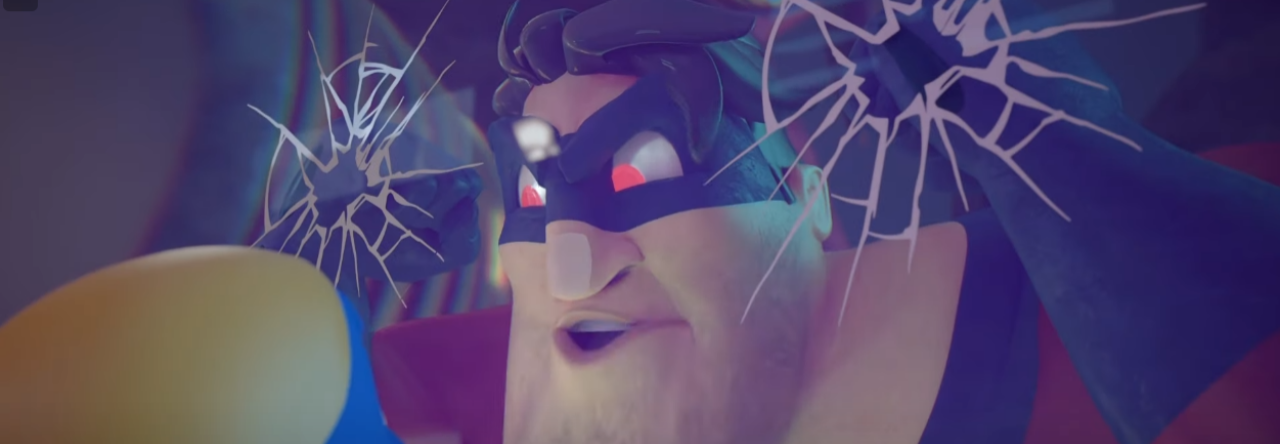We would like to welcome back, March 11 Second Club winner, Camille Campion. Camille are there any artists or animators that you look towards for inspiration?
I’m not a good follower… I don’t have a list of famous animators. I spend time looking for all the good animations I can find, sometimes from a famous animator, from a big american studio, and sometimes from a student’s short film.
I’ve had the chance to work in different places with talented animators. My inspiration, many times, comes from my colleagues. They don’t necessarily need to be very experienced or extremely talented to be inspiring for me. Sometimes regulars animators just have that good idea for their shot that makes it awesome.
I have special thanks for different people who’ve really improved my animation level- Yoshimishi Tamura who was my first “mentor” when I start working, Drifa Benseghir my second director of animation who transmits her good energy to me, and many colleagues in Kandor, French and Spanish!
Could you tell us a little about your process for your animation “Interview” from planning/reference to splining?
My planning for this animation was a bit rough. I didn’t have much time to do it, that’s why I didn’t use any video references or thumbnails. I usually don’t use a lot of video reference in my animation process, but to find more ideas when I’m in an inspiration crisis.
For my animation “Interview” I dedicated one day to write the idea, think about characters, and the staging, two days to make the two different versions of malcolm I use, prepare the props and the background (modeling and rigging) and compose my shots, and five days of animation.
11 second club March 2013 – Animation Process from camille campion on Vimeo.
First, I started making golden poses in the step I name “Rough”. I work fast and think only in narration and posing. Next, in the “Blocking” step, I start working on the timing, and how I can improve my narration. The first splining step is the part I don’t like, the boring technical moment. That’s why I develop a very strict methodology to do it as fast as I can. First, I clean a bit my curves. Then, I modify the timing just moving my poses in the timeline and adding some breakdowns, to be sure about the energy. Next, I use motion trail in the camera view, following the mass hierarchy of my body, first I clean the Root (the hips), next the chest, the head etc… The objective is to have something working efficiently without noises.
When I have this first splining pass, I can look at the rough version of the animation, change some details, refine curves and arcs, improve the timing, refine the lip-sinc to make it Final.
What was the most difficult part when animating this dialogue, and how did you work through it?
The adaptation when you are discovering a rig is the most difficult part for me. Next, as I said before, the blocking is a real pleasure, there is no part more or less difficult, it just takes time. I need more motivation for the first splining process…
Your hand motion felt very fluid. How did you come up with those particular hand gestures and in general how do you approach animating hands?
I don’t have a specific treatment for the hand. Hands are include in the blocking process composing the silhouette of the character, I try to make it cool and appealing. In the splining process, I spend time cleaning the curves frame by frame, improving the spacing and the timing when I can. Many students make the error of systematically having the hand follow the chest, but the hand expresses many emotions like the eyes or facial expressions. Many times your fingers nervously react before the rest of your body
Lastly, what advice would you give to students that are just getting into animation?
You have to find your method, your way to animate for fun and pleasure. The better shots are made by happy animators. We need to have fun during the full process.
Animate and animate and animate again, this is the practice that we find all of this and how we can improve our level. Try to find people who can give you advice, and feedback on your work. If you’re a student, ask your teachers and the others students. If you are working, ask your colleagues. And, if you’re alone in front of your computer, try to contact animators by vimeo, linkedin etc.. to asking for feedback on your work (there are many generous animators in the world).





